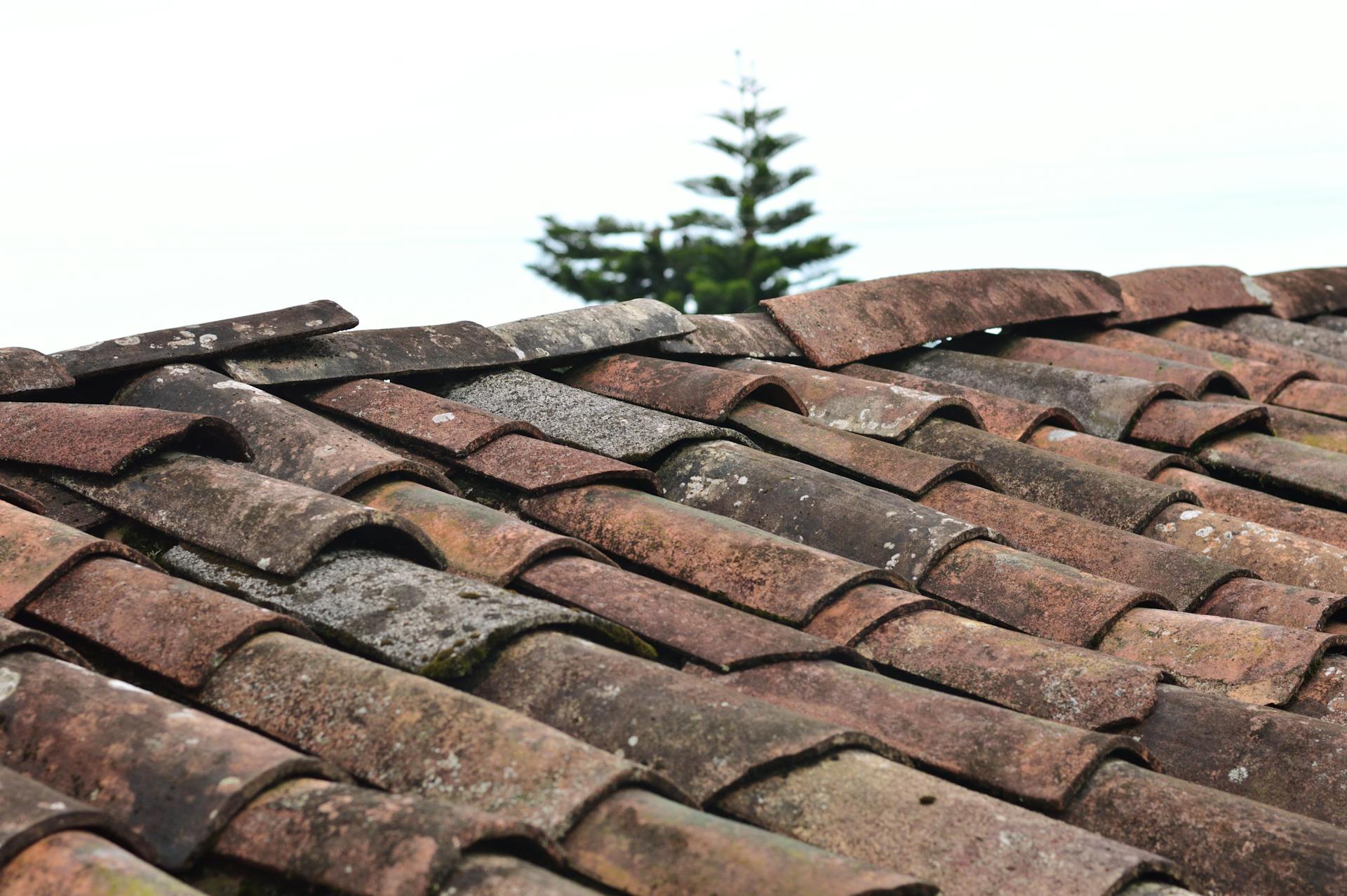How to Calculate the Average Cost to Tear Off and Replace a Roof – FangWallet

This article may contain references to products or services from one or more of our advertisers or partners. We may receive compensation when you click on links to those products or services. Nonetheless, our opinions are our own.
Key Highlights
- The average cost to tear off and replace a roof ranges from $5,700 to $16,000.
- Expect to pay between $3 and $6 per square foot for a new roof.
- Factors like roof size, complexity, pitch, and materials significantly impact the cost.
- Labor typically makes up 50% to 60% of the total roof replacement cost.
- Get at least three estimates from reputable roofing contractors before starting your project.
- Consider the pros and cons of a full roof replacement versus just an overlay.
Introduction
Getting a new roof is a big investment for any homeowner. It’s important to know the average cost to remove and replace a roof for your budget and planning. The cost of roof replacement can change depending on where you are, the materials you choose, and other details of the project. This guide will help you understand how to estimate costs effectively. Let’s look at the factors that affect roof replacement costs and break down the process step by step.
Understanding Roof Replacement Costs
Starting a roof replacement project needs you to know the costs involved. If you do not research and plan well, you might face extra costs and delays.
This part will explain why getting the right estimates for roof replacement is crucial. We will look at the different things that affect the cost. This way, you can make smart choices for your roofing project.
The Importance of Accurate Roof Replacement Estimates
A clear roof replacement estimate is important for good budgeting. It helps avoid surprise expenses later on. If you do not have a clear idea of the total cost, you might waste your savings or spend too much.
Getting accurate estimates lets you compare quotes from different roofing contractors. This way, you can choose the best fit for your needs and budget. You can also use online tools like a replacement cost calculator for a rough idea of what it may cost.
But keep in mind that online calculators only give general estimates. The final cost can change based on things like the complexity of your roof, how easy it is to access, and any unexpected repairs. That’s why having a qualified roofing contractor check your roof in person is very important for an accurate and detailed estimate.
Key Factors Influencing Roof Replacement Costs
Several important factors affect how much you will pay for your roof replacement. Let’s look at some of these factors.
First, the type of roofing material you choose impacts the cost a lot. Materials like asphalt shingle, metal roofing, and natural slate have different prices. These prices reflect how long they last, how they look, and how strong they are.
Labor costs are also a key factor to think about. The size of your roof plays a huge role in these labor costs. Larger roofs need more time and workers to fix. Lastly, the design of your roof, such as the number of slopes, valleys, and dormers, affects the time needed for installation. This, in turn, impacts the overall labor costs.
Preparing for Your Roof Replacement Project
Preparing well before you start your roof replacement project will help things go smoothly. There are two main steps to take: Check the condition of your current roof and collect the documents and permits you need.
Spending time on these early steps can help you avoid problems later on. It also makes sure you follow local rules and regulations.
Assessing Your Current Roof Condition
Evaluating your old roof’s condition is the first step in the replacement process. Start by checking your attic for any signs of water damage, leaks, or light coming through the roof boards. Look for sagging spots on the roof’s outside, and check for missing or damaged shingles. Also, see if there is any moss or algae growth.
If your existing roof is in good condition, you may just need a simple overlay. This means putting new shingles on top of the old layer. But, if there is a lot of damage, you will need to remove everything and replace it. This will help the roof last longer and work better.
A careful inspection by a qualified roofing professional is important. They can help you decide what the best option is for your situation.
Gathering Necessary Documentation and Permits
Most roofing jobs, like full replacements and big repairs, need permits from your local government. Before you start working, talk to your city or county’s building department to find out what permits you need.
Your local roofing contractors usually know how to get these permits and can often take care of it for you. Make sure to check that this service is included before you sign any contracts.
Getting the right permits not only helps your home improvement project meet the rules but also keeps you safe from legal problems later on.
A Beginner’s Guide to Roof Replacement
Replacing a roof is a big project that needs good planning and careful action. You have to do many things. First, you pick the right materials. Next, you measure your roof area. Then, you need to figure out how much material you will need and how much you will pay for labor costs.
This guide will help you with each step to make your roof replacement successful.
What You Need to Get Started
Before starting your roof replacement project, you need to gather some important parts. This means picking a trustworthy roofing contractor. You should also choose the right roofing material that fits your home and budget. Plus, understand what the roof installation will involve.
Start by looking for good local roofing contractors. Find professionals who have experience and the right licenses and insurance. Check their customer reviews to see what others say about them. After selecting a contractor, talk about the roofing material you want and what your budget is.
They will help you explore the choices based on durability, looks, and costs. By focusing on these important steps, you will create a strong start for your roof replacement.
Step 1: Choosing the Right Roofing Material
The market has many types of roofing materials. Each type has its own advantages and disadvantages. Asphalt shingles are a popular choice. They are affordable and easy to install. Metal roofing is another option. It lasts a long time, is energy-efficient, and looks modern. However, it is more expensive.
Natural slate is a high-end choice. It is known for its classic beauty and long life, but it requires a bigger budget. When picking roofing material, think about your budget, how long you want it to last, how it looks, and your home’s style.
Talking with your roofing contractor will help you compare your options. They can help you make a smart choice that fits your needs and budget.
Step 2: Measuring Your Roof Area
To find out how big your roof is in square feet, you need to do some measuring. First, break your roof into easier rectangular parts. For each part, use a tape measure to find the length and width in feet.
Next, multiply the length and width together. This gives you the area in square feet for that section. After you measure all the sections, add their areas together to get the total square footage of your roof area.
Remember, the pitch of your roof matters too. Steeper roofs have more surface area, which means you will need more materials. For precise measurements, talk to a roofing expert or use a roof pitch calculator online.
Step 3: Calculating Material Needs
Once you know the square footage, figure out how much roofing material you need. Roofing materials often come in “squares,” each covering 100 square feet. So, if your roof is 1,500 square feet, you will need 15 squares of roofing material. However, add an extra 10% to 15% for waste, cuts, and mistakes.
You should also think about other materials besides shingles. A shingle roof replacement needs underlayment, flashing, drip edges, and fasteners. Talk to your roofing contractor for a full list of what you need based on your roof type.
By calculating your material needs closely, you can budget well, avoid holds up, and make sure you have enough stuff ready for an easy installation process.
Step 4: Estimating Labor Costs
Labor costs are usually a big part of what you spend on roof replacement. While it’s easy to figure out material costs, estimates for labor can change based on a few things. These factors include how big and complex your roof is, how easy it is to access your roofline, and the labor rates from different roofing companies in your area.
Steeper roofs or those with complicated designs need more time and skill, which means higher labor costs. Local labor rates also depend on the cost of living and how many people need roofing services.
To find the best value for your money, get quotes from several trusted roofing contractors. Make sure that these quotes clearly show the labor costs. This way, you can compare and pick the right option for your roof replacement.
Step 5: Accounting for Removal and Disposal Fees
Before you set your budget, remember to add the cost of taking off your old roof and getting rid of the waste. Roof removal means taking away the old shingles, underlayment, and any other parts that need to be replaced.
Disposal fees can change based on where you live and how much waste you have. If your home has multiple layers of roofing, it can raise the removal costs. That’s because it might need more work and extra trips to throw away the debris.
It’s important to talk about these fees before starting your project with your roofing contractor. A trustworthy contractor will include these costs when they first give you an estimate, helping you plan your total budget clearly.
Factors Affecting the Cost of Roof Replacement
It’s important to know the other things that can change the total cost, besides the main steps mentioned earlier. This includes the types and prices of materials, the size and slope of your roof, and how costs can differ depending on where you live.
Keeping these factors in mind helps you expect possible expenses. It also ensures that your budget matches the materials you choose and the scope of your project.
Material Types and Their Costs
Different roofing materials have different prices. As mentioned before, an asphalt shingle roof is the most affordable choice. It gives a good mix of price and decent life. A metal roof costs more but offers better durability and energy efficiency. It also lasts a lot longer than asphalt, often by decades.
If you want a stylish look, clay tiles are beautiful and last a long time, but they are more expensive. Other things, like the availability of materials in your area and transport costs, can affect the final price.
Always talk about your budget and material choices with your roofing contractor. They can guide you through the options and suggest the best value for your needs.
The Impact of Roof Size and Slope
The size and angle of your roof affect how much it costs to replace. Bigger roofs need more materials and work, which raises the total cost. If the roof is steeper, the work gets more difficult and takes longer, increasing labor costs.
Also, contractors might need extra safety measures and special tools for steep roofs, which adds to the expenses. Knowing how roof size relates to cost can help you plan your budget better.
For example, if your roof is twice the size, it usually means the cost is almost double. Steeper roof pitches can greatly raise labor charges because they need special skills and safety precautions.
Geographic Location and Seasonal Variations
Your location in the United States can affect how much you pay for roof replacement. Areas with a high cost of living usually have higher labor and material costs. Moreover, places that experience harsh weather, like many hailstorms or heavy snow, need stronger and often pricier roofing materials.
The time of year can also change costs. The busy roofing season, which is usually in warmer months, tends to have higher demand. This can lead to increased prices for materials and labor. But if you choose to replace your roof in the off-season, you might save money because demand is lower.
Talking with local contractors about the best time for your roof replacement can help you plan wisely and possibly reduce costs.
Comparing Roof Replacement Options
When thinking about roof replacement, it’s important to look at the options that fit your needs and budget. One important choice is whether to do a full or partial replacement. You also need to check out the different roofing systems that are available.
To make a good choice, you should know the advantages and disadvantages of each option, as well as the costs involved.
Full vs Partial Roof Replacement
Deciding whether to fully replace your roof or just do a partial replacement depends on how much damage there is and what your long-term plans are.
A full roof replacement means taking off the entire roof down to the deck. This way, you can check for and fix any hidden problems before putting on the new roof system.
This option usually costs more, but it gives you peace of mind and helps you avoid future issues. On the other hand, a partial roof replacement focuses on fixing or replacing only the damaged sections. This option is cheaper, but it’s best for small areas of damage and may not solve deeper problems that could come up again later.
Understanding Different Roofing Systems
Multiple roofing systems exist, each with pros, cons, and costs. Choosing the appropriate system depends on your budget, aesthetic preferences, and desired longevity. Here’s a simple comparison:
|
Roofing System |
Cost |
Lifespan |
Pros |
Cons |
|
Asphalt Shingles |
Most Affordable |
15-30 years |
Various colors and styles, easy installation |
Less durable than other options, susceptible to wind damage |
|
Metal Roofing |
Mid-range – High |
40-70 years |
Durable, energy-efficient, fire-resistant |
Higher upfront cost |
|
Tile Roof |
High |
50-100 years |
Long-lasting, fire-resistant, aesthetically pleasing |
Expensive, heavy, requires specialized installation |
|
Flat Roof |
Affordable – Mid-range |
10-20 years |
Affordable, space-saving, can accommodate rooftop patios |
Requires regular maintenance, susceptible to leaks |
Consult with a roofing expert to explore these options and determine the best fit for your specific needs.
Conclusion
In conclusion, to understand the average cost of tearing off and replacing a roof, you need to think about different factors. These factors include materials, labor, and removal fees, among others. Getting accurate estimates is very important for planning your roof replacement project well. You should check the condition of your current roof. Then, pick the right materials and consider the labor costs to have a successful project. By following these simple steps and looking at various roofing choices, you can make smart decisions that fit your budget and needs. If you are ready to start this project, talk to trusted roofing contractors. They can help make the process smooth and efficient.
Frequently Asked Questions
How often should a roof be replaced?
A roof’s life depends on the type of roofing material and how well you take care of it. Some materials, like slate, can last for a hundred years. However, asphalt shingles might need a roof replacement after just 20 years. You can help your roof last longer with regular maintenance and quick repairs. Still, new shingles and a full roof replacement will be needed at some point.
Can I replace my roof myself to save costs?
DIY roof replacement might look like a good way to save money on labor costs, but it can be very dangerous. It is not safe and not a good idea. Roofing is a tricky home improvement project. It’s better to leave it to professional roofing contractors. They have the right skills, tools, and experience. This ensures a safe and quality installation.
What is the best time of year to replace a roof?
The best time for roofing is usually in mild weather, like spring or fall. During these seasons, roofing workers can do their jobs better. Good weather means fewer risks from very hot or cold conditions. Talk to your chosen contractor for suggestions that fit your area.
How can I finance my roof replacement?
You can choose different ways to pay for your roof replacement cost. Look into personal loans, home equity loans, or lines of credit. These options let you spread out the payments over time. Some roofing companies also provide their own financing plans. Be sure to check the interest rates and terms before you decide which option is best for you.
What should I look for in a roofing contractor?
When you pick a good roofing contractor, focus on ones that have the right licenses and insurance. Look for those with a strong history of high-quality work and good customer feedback. Get detailed roof estimates from several contractors. Compare what they offer and make sure they communicate clearly and honestly during the entire process.

Reviewed and edited by Albert Fang
Did you like our article and find it insightful? We encourage sharing the article link with family and friends to benefit as well – better yet, sharing on social media. Thank you for the support! 🍉
Article Title: How to Calculate the Average Cost to Tear Off and Replace a Roof
https://fangwallet.com/2024/11/05/average-cost-to-tear-off-and-replace-roof-calculator/The FangWallet Promise
FangWallet is an editorially independent resource – founded on breaking down challenging financial concepts for anyone to understand since 2014. While we adhere to editorial integrity, note that this post may contain references to products from our partners.
The FangWallet promise is always to have your best interest in mind and be transparent and honest about the financial picture.
Become an Insider
Editorial Disclaimer: The editorial content on this page is not provided by any of the companies mentioned. The opinions expressed here are the author’s alone.
The content of this website is for informational purposes only and does not represent investment advice, or an offer or solicitation to buy or sell any security, investment, or product. Investors are encouraged to do their own due diligence, and, if necessary, consult professional advising before making any investment decisions. Investing involves a high degree of risk, and financial losses may occur including the potential loss of principal.
Advertiser Disclosure: This article may contain references to products or services from one or more of our advertisers or partners. We may receive compensation when you click on links to those products or services.
Source: How to Calculate the Average Cost to Tear Off and Replace a Roof – FangWallet




